
Deutsch-Chinesische Enzyklopädie, 德汉百科

National Ignition Facility achieves fusion ignition
The U.S. Department of Energy (DOE) and DOE’s National Nuclear Security Administration (NNSA) today (Dec. 13) announced the achievement of fusion ignition at Lawrence Livermore National Laboratory (LLNL) — a major scientific breakthrough decades in the making that will pave the way for advancements in national defense and the future of clean power. On Dec. 5, a team at LLNL’s National Ignition Facility (NIF) conducted the first controlled fusion experiment in history to reach this milestone, also known as scientific energy breakeven, meaning it produced more energy from fusion than the laser energy used to drive it. This first-of-its-kind feat will provide unprecedented capability to support NNSA’s Stockpile Stewardship Program and will provide invaluable insights into the prospects of clean fusion energy, which would be a game-changer for efforts to achieve President Biden’s goal of a net-zero carbon economy.
“This is a landmark achievement for the researchers and staff at the National Ignition Facility who have dedicated their careers to seeing fusion ignition become a reality, and this milestone will undoubtedly spark even more discovery,” said U.S. Secretary of Energy Jennifer M. Granholm. “The Biden-Harris Administration is committed to supporting our world-class scientists — like the team at NIF — whose work will help us solve humanity’s most complex and pressing problems, like providing clean power to combat climate change and maintaining a nuclear deterrent without nuclear testing.”

“We have had a theoretical understanding of fusion for over a century, but the journey from knowing to doing can be long and arduous. Today’s milestone shows what we can do with perseverance,” said Dr. Arati Prabhakar, the President’s chief adviser for Science and Technology and director of the White House Office of Science and Technology Policy.
“Monday, December 5, 2022, was a historic day in science thanks to the incredible people at Livermore Lab and the National Ignition Facility. In making this breakthrough, they have opened a new chapter in NNSA’s Stockpile Stewardship Program,” NNSA Administrator Jill Hruby said. “I would like to thank the members of Congress who have supported the National Ignition Facility because their belief in the promise of visionary science has been critical for our mission. Our team from around the DOE national laboratories and our international partners have shown us the power of collaboration.”
“The pursuit of fusion ignition in the laboratory is one of the most significant scientific challenges ever tackled by humanity, and achieving it is a triumph of science, engineering, and most of all, people,” LLNL Director Dr. Kim Budil said. “Crossing this threshold is the vision that has driven 60 years of dedicated pursuit — a continual process of learning, building, expanding knowledge and capability, and then finding ways to overcome the new challenges that emerged. These are the problems that the U.S. national laboratories were created to solve.”
“This astonishing scientific advance puts us on the precipice of a future no longer reliant on fossil fuels but instead powered by new clean fusion energy,” U.S. Senate Majority Leader Charles Schumer (NY) said. “I commend Lawrence Livermore National Labs and its partners in our nation’s Inertial Confinement Fusion (ICF) program, including the University of Rochester’s Lab for Laser Energetics in New York, for achieving this breakthrough. Making this future clean energy world a reality will require our physicists, innovative workers and brightest minds at our DOE-funded institutions, including the Rochester Laser Lab, to double down on their cutting-edge work. That’s why I’m also proud to announce today that I’ve helped to secure the highest-ever authorization of over $624 million this year in the National Defense Authorization Act for the ICF program to build on this amazing breakthrough.”
“After more than a decade of scientific and technical innovation, I congratulate the team at Lawrence Livermore National Laboratory and the National Ignition Facility for their historic accomplishment,” said U.S. Senator Dianne Feinstein (CA). “This is an exciting step in fusion and everyone at Lawrence Livermore and NIF should be proud of this milestone achievement.”
“This is an historic, innovative achievement that builds on the contributions of generations of Livermore scientists. Today, our nation stands on their collective shoulders. We still have a long way to go, but this is a critical step and I commend the U.S. Department of Energy and all who contributed toward this promising breakthrough, which could help fuel a brighter clean energy future for the United States and humanity,” said U.S. Senator Jack Reed (RI), the chairman of the Senate Armed Services Committee.
“This monumental scientific breakthrough is a milestone for the future of clean energy,” said U.S. Senator Alex Padilla (CA). “While there is more work ahead to harness the potential of fusion energy, I am proud that California scientists continue to lead the way in developing clean energy technologies. I congratulate the scientists at Lawrence Livermore National Laboratory for their dedication to a clean energy future, and I am committed to ensuring they have all of the tools and funding they need to continue this important work.”
“This is a very big deal. We can celebrate another performance record by the National Ignition Facility. This latest achievement is particularly remarkable because NIF used a less spherically symmetrical target than in the August 2021 experiment,” said U.S. Representative Zoe Lofgren (CA-19). “This significant advancement showcases the future possibilities for the commercialization of fusion energy. Congress and the Administration need to fully fund and properly implement the fusion research provisions in the recent CHIPS and Science Act and likely more. During World War II, we crafted the Manhattan Project for a timely result. The challenges facing the world today are even greater than at that time. We must double down and accelerate the research to explore new pathways for the clean, limitless energy that fusion promises.”

“I am thrilled that NIF — the United States’ most cutting-edge nuclear research facility — has achieved fusion ignition, potentially providing for a new clean and sustainable energy source in the future. This breakthrough will ensure the safety and reliability of our nuclear stockpile, open new frontiers in science, and enable progress toward new ways to power our homes and offices in future decades,” said U.S. Representative Eric Swalwell (CA-15). “I commend the scientists and researchers for their hard work and dedication that led to this monumental scientific achievement, and I will continue to push for robust funding for NIF to support advancements in fusion research.”
LLNL’s experiment surpassed the fusion threshold by delivering 2.05 megajoules (MJ) of energy to the target, resulting in 3.15 MJ of fusion energy output, demonstrating for the first time a most fundamental science basis for inertial fusion energy (IFE). Many advanced science and technology developments are still needed to achieve simple, affordable IFE to power homes and businesses, and DOE is currently restarting a broad-based, coordinated IFE program in the United States. Combined with private-sector investment, there is a lot of momentum to drive rapid progress toward fusion commercialization.
Fusion is the process by which two light nuclei combine to form a single heavier nucleus, releasing a large amount of energy. In the 1960s, a group of pioneering scientists at LLNL hypothesized that lasers could be used to induce fusion in a laboratory setting. Led by physicist John Nuckolls, who later served as LLNL director from 1988 to 1994, this revolutionary idea became inertial confinement fusion, kicking off more than 60 years of research and development in lasers, optics, diagnostics, target fabrication, computer modeling and simulation and experimental design.
To pursue this concept, LLNL built a series of increasingly powerful laser systems, leading to the creation of NIF, the world’s largest and most energetic laser system. NIF — located at LLNL in Livermore, California — is the size of a sports stadium and uses powerful laser beams to create temperatures and pressures like those in the cores of stars and giant planets, and inside exploding nuclear weapons.

Achieving ignition was made possible by dedication from LLNL employees as well as countless collaborators at DOE’s Los Alamos National Laboratory, Sandia National Laboratories and Nevada National Security Site; General Atomics; academic institutions, including the University of Rochester’s Laboratory for Laser Energetics, the Massachusetts Institute of Technology, the University of California, Berkeley, and Princeton University; international partners, including the United Kingdom’s Atomic Weapons Establishment and the French Alternative Energies and Atomic Energy Commission; and stakeholders at DOE and NNSA and in Congress.


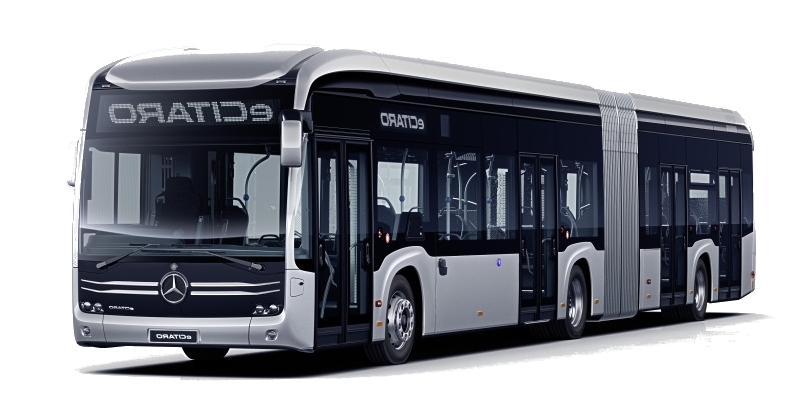
 Automobile
Automobile

 Education and Research
Education and Research

 Education and Research
Education and Research
 *Important disciplines
*Important disciplines

 History
History
 N 2000 - 2100 AD
N 2000 - 2100 AD


 IT-Times
IT-Times
 CAD/CAE/CAM/EDA/PDM/PLM
CAD/CAE/CAM/EDA/PDM/PLM



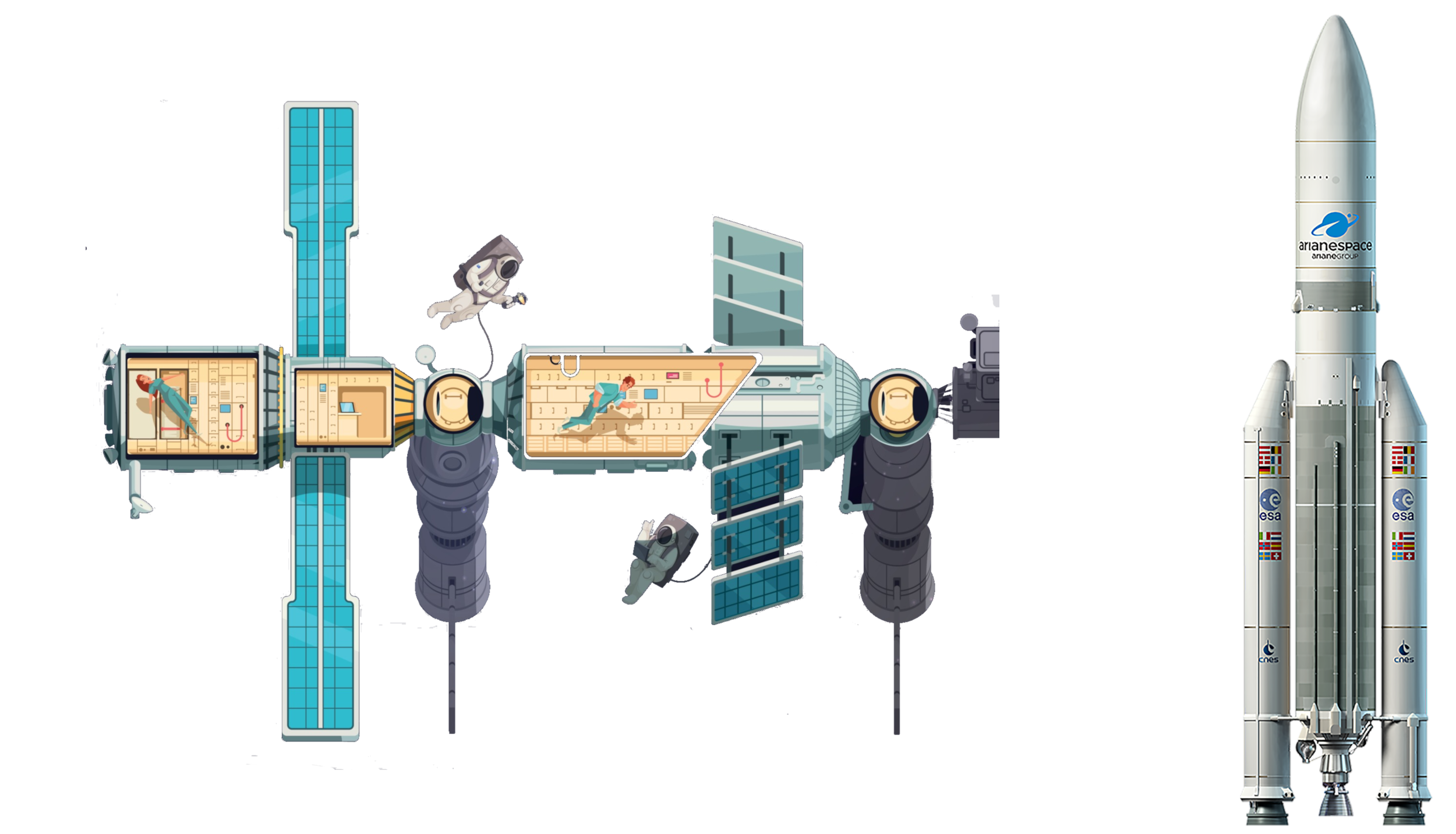 Aerospace
Aerospace

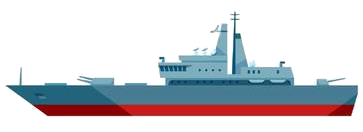


 Military, defense and equipment
Military, defense and equipment

 Motorsport
Motorsport

 Ships and Nautics
Ships and Nautics

 Important disciplines
Important disciplines

 Science and technology
Science and technology
 Technology concepts
Technology concepts
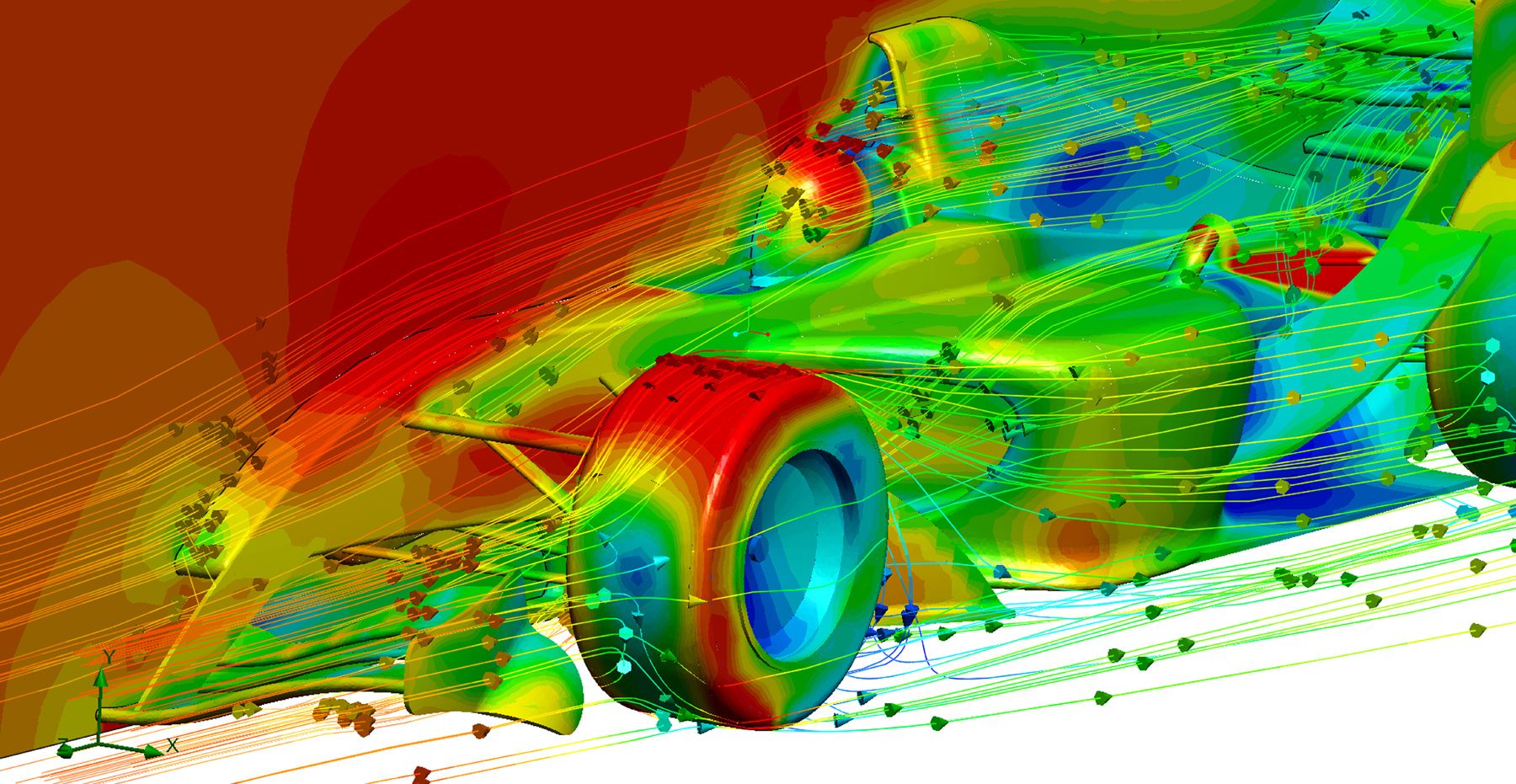
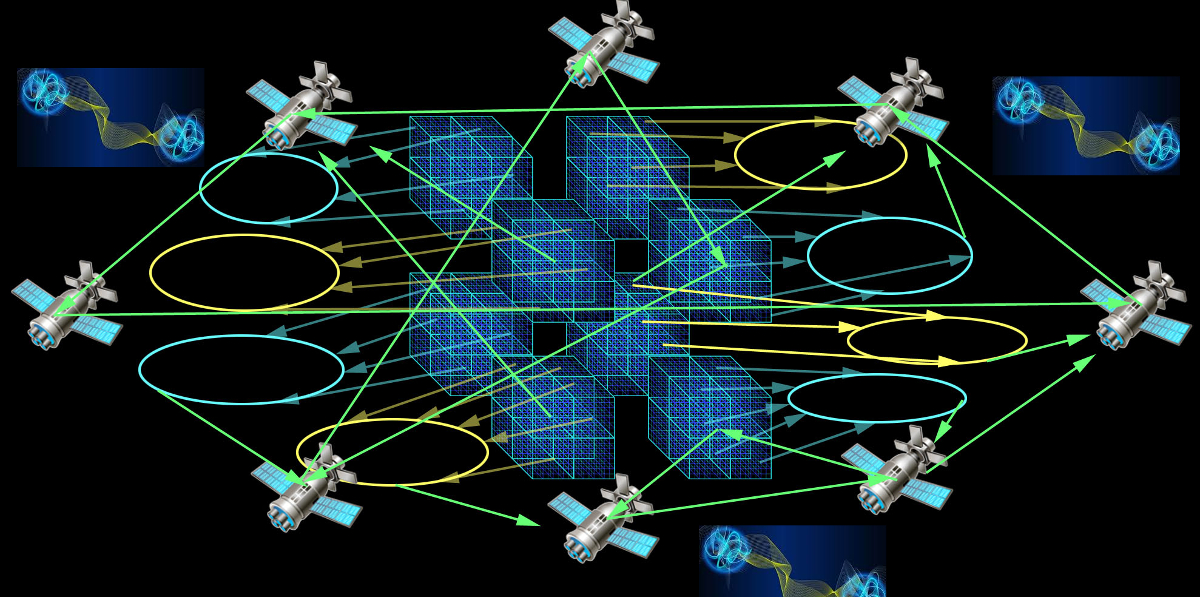
量子网络(英语:quantum network),是指在多个通信节点间,利用量子密钥分发进行安全通信的网络。各节点间产生的量子密钥可以对传统的语音、图像以及数字多媒体等通信数据进行加密和解密。由于量子通信线路无法通过挂接旁路窃听或拦截窃听,只要被窃听就会让量子态发生变化从而改变通信内容被侦知,从而实现安全的通信。
Unter einem Quantennetzwerk (manchmal auch Quanteninternet[1]) versteht man die Verbindung von Quanteninformationsträgern (Quantenknoten) mittels Quantenkanälen.
Da sich Quanteninformation (z. B. Qubits) aufgrund des No-Cloning-Theorems nicht kopieren lässt, ist eine Informationsübertragung wie in einem klassischen Netzwerk nicht möglich. Vielmehr muss ein Transfer des Quantenzustandes von einem zum anderen Knoten erfolgen. Eine Möglichkeit dies zu erreichen ist die Verwendung von Quantenteleportation. Ist die Übertragungsstrecke so groß, dass Pfadverluste eine Rolle spielen, bietet sich das Schema des Quantenrepeaters an.
Sollen beliebige Verbindungen zwischen verschiedenen Orten auf Basis der Quantenkryptographie aufgebaut werden (Long-Distance Quantum Communication [2]), wird ein Netzwerk an Repeaterstationen benötigt, das mit der Infrastruktur des heutigen Internet verglichen werden kann. Ein solches Quantennetzwerk ist noch weit entfernt vom alltäglichen Einsatz; die dafür benötigten Bausteine wurden aber bereits international als Prototypen in Labors implementiert.

 Energy resource
Energy resource

 Energy resource
Energy resource
 *Nuclear power
*Nuclear power



 Aerospace
Aerospace




 Military, defense and equipment
Military, defense and equipment

 Ships and Nautics
Ships and Nautics

Nuclear Battery
The public is familiar with nuclear energy in nuclear power plants but not in batteries. Nuclear batteries are in fact closer to nuclear power plants than traditional batteries in that they use radioactivity to generate power instead of storing an amount of charge. When compared to chemical batteries, nuclear batteries are characterized by higher volumetric energy density (therefore longer battery life) and stronger endurance in harsh conditions. This report will explore the present state of nuclear battery technology and recently discovered possible breakthroughs.
Applications
Space exploration poses unique challenges that are not faced when working with electronics on Earth. It is impossible or extremely costly to access a device once it has been launched into the space. Because only a small percentage of sunlight reaches the outer perimeter of the solar system compared to the orbit of Earth, solar energy is not a practical solution to powering electronic equipments when exploring the outer planets. NASA uses a specific type of nuclear battery technology called Radioactive Thermoelectric Generator (RTG) to power their spacecrafts in missions that last over 10 years.
Implantable medical devices (IMDs) also utilize the unique characteristics of nuclear batteries. Just like in spacecrafts, batteries used to power IMDs must function reliably over a long period of time without being accessed for recharge or maintenance. Unlike in spacecrafts, however, batteries used in IMDs must be limited in size and radioactivity. Hence, a different nuclear battery technology called betavoltaic cell is used in IMDs. Although the technology was invented and widely used for patients in the 1970s, the potential risk of radiation convinced the medical industry to shift to lithium ion batteries in the 1980s. Only with the recent advancement in safety of nuclear batteries, the option with a considerable advantage in battery life is being reconsidered.
The United States Department of Defense requires that every missile and aircraft be equipped with an anti-tamper protection such that the technology cannot be reverse-engineered by others. Because a single instance of battery malfunction can wipe the memory circuit's configuration, batteries used in anti-tamper system must withstand temperatures between -65 and +150 degrees Celsius, high-frequency vibrations, and high humidity. [1] Lockheed Martin Missiles and Fire Control, therefore, uses nuclear batteries to power the anti-tamper system under harsh conditions and prolonged usage. [1]
Radioactive Thermoelectric Generator (RTG)
Radioactive Thermoelectric Generator uses heat generated spontaneously from radioactive substances. The technology requires a large space to capture escaping heat inside semiconductors effectively. The shortcomings of RTG technology are its poor efficiency of 6%, its low power density, and its large size. [2]
NASA calls their technology Multi-Mission Radioisotope Thermoelectric Generator (MMRTG), and in 2016, NASA announced the next generation Enhanced Multi-Mission Radioisotope Thermoelectric Generator (eMMRTG). As Fig. 1 illustrates, eMMRTG improves the original MMRTG with a new thermoelectric technology called Thermoelectric Couple Assembly. eMMRTG's improved efficiency will also help NASA save plutonium which is in extreme shortage in the United States.
Betavoltaic Cells
Betavoltaic cells, also known as betavoltaic devices, are a nuclear battery technology used in small devices that cannot use Radioactive Thermoelectric Generators. Betavoltaic cells utilize beta-decay of isotopes such as tritium. Tritium is a byproduct of nuclear power plants, so manufacturing betavoltaic cells with tritium is an excellent way to turn nuclear wastes into useful goods. [3] The shortcoming of betavoltaic cells in, comparison to chemical batteries, is the low power output. According to Jonathane Greene, the CEO of Widetronix which manufactures betavoltaic cells, a package that is one centimeter-squared wide and two-tenths of a centimeter tall generates one microwatt of power. [1] In comparison, a smartphone using 50% CPU, Wi-Fi connection, and white display will use 1857 mW, so a nuclear battery is not suitable for consumer electronics. [4]
Aqueous Nuclear Battery
Baek Hyun Kim and Jae Won Kwon at University of Missouri published a paper in 2014 proposing one possible next generation nuclear battery technology. Aqueous Nuclear Battery, which is also known as water-based nuclear battery, uses liquid medium for radiolysis, absorbing the kinetic energy of beta particles which is lost in betavoltaic cells. In Kim and Kwon's design using nanoporous titanium dioxide semiconductors coated in platinum, a high efficiency of 53.88% was reached at a potential of 0.9 volts. [5] Using an aqueous solution for radiolytic energy conversion results in higher energy level and lower temperature than using a solid state material does.
Diamond Nuclear Battery
The University of Bristol posted a press release in 2016 introducing another possible next generation nuclear battery technology using carbon isotopes in the form of diamonds. Nuclear power generation produces radioactive waste that cannot be easily disposed. In United Kingdom alone, 95,000 tons of radioactive C-14 are deposited and decaying. Researchers at the University of Bristol discovered a way to heat and gasify the radioactive C-14 concentration on the surface of deposited nuclear graphite wastes, and condense the gas into artificial diamonds. A man-made diamond generates an electric current when placed in a radiation field, and a diamond made of C-14 produces a radioactive field spontaneously. Hence, the diamond battery can create a constant electric current as long as it remains radioactive. Although C-14 can deliver only 15 joules per gram (compared to 700 joules per gram of standard alkaline battery), the C-14 diamond battery can generate power for 7746 years before reaching 50% charge (compared to a single day usage of standard alkaline battery). The C-14 diamond can be encapsulated in a non-radioactive diamond shell which will block all radiation and protect the battery under harsh conditions. [6] The resulting battery is made of the hardest material on Earth, so the industry might finally overcome the psychological resistance of sensitive clients such as patients using IMDs.
Conclusion
Nuclear batteries remain impractically expensive and slow to power consumer products. Furthermore, an essential ingredient of nuclear batteries is the waste from nuclear power plants, so the nuclear battery industry depends on that of the nuclear power plant. However, new technologies that allow for smaller, safer, more efficient, and longer-lasting nuclear batteries suggest a bright future for nuclear battery products in above-stated niche markets. When the cost of manufacturing nuclear batteries decreases, low-power internet-of-things devices could also be powered cord-free for thousands of years with a single charge using this revolutionary technology one day.
© Junwon Park. The author grants permission to copy, distribute and display this work in unaltered form, with attribution to the author, for noncommercial purposes only. All other rights, including commercial rights, are reserved to the author.
References
[1] K. Bourzac, "A 25-Year Battery," Technology Review, 17 Nov 09.
[2] M. A. Prelas et al., "A Review of Nuclear Batteries," Prog. Nucl. Energ., 75, 117 (2014).
[3] V. M. Efremenkov, "Radioactive Waste Management at Nuclear Power Plants," IAEA Bulletin, March 1989, p. 37.
[4] B. A. Naik and R. K. Chavan, "Optimization of Power Usage of Smartphones," Int. J. Comput. Appl. 119, 7 (2015).
[5] B.H. Kim and J. W. Kwon, "Plasmon-Assisted Radiolytic Energy Conversion in Aqueous Solutions," Sci. Rep. 4, 5249 (2014).
[6] D.T. Connor, P. G. Martin, T. B. Scott, "Airborne Radiation Mapping: Overview and Application of Current and Future Aerial Systems," Int. J. Remote Sens. 37, 5953 (2016).
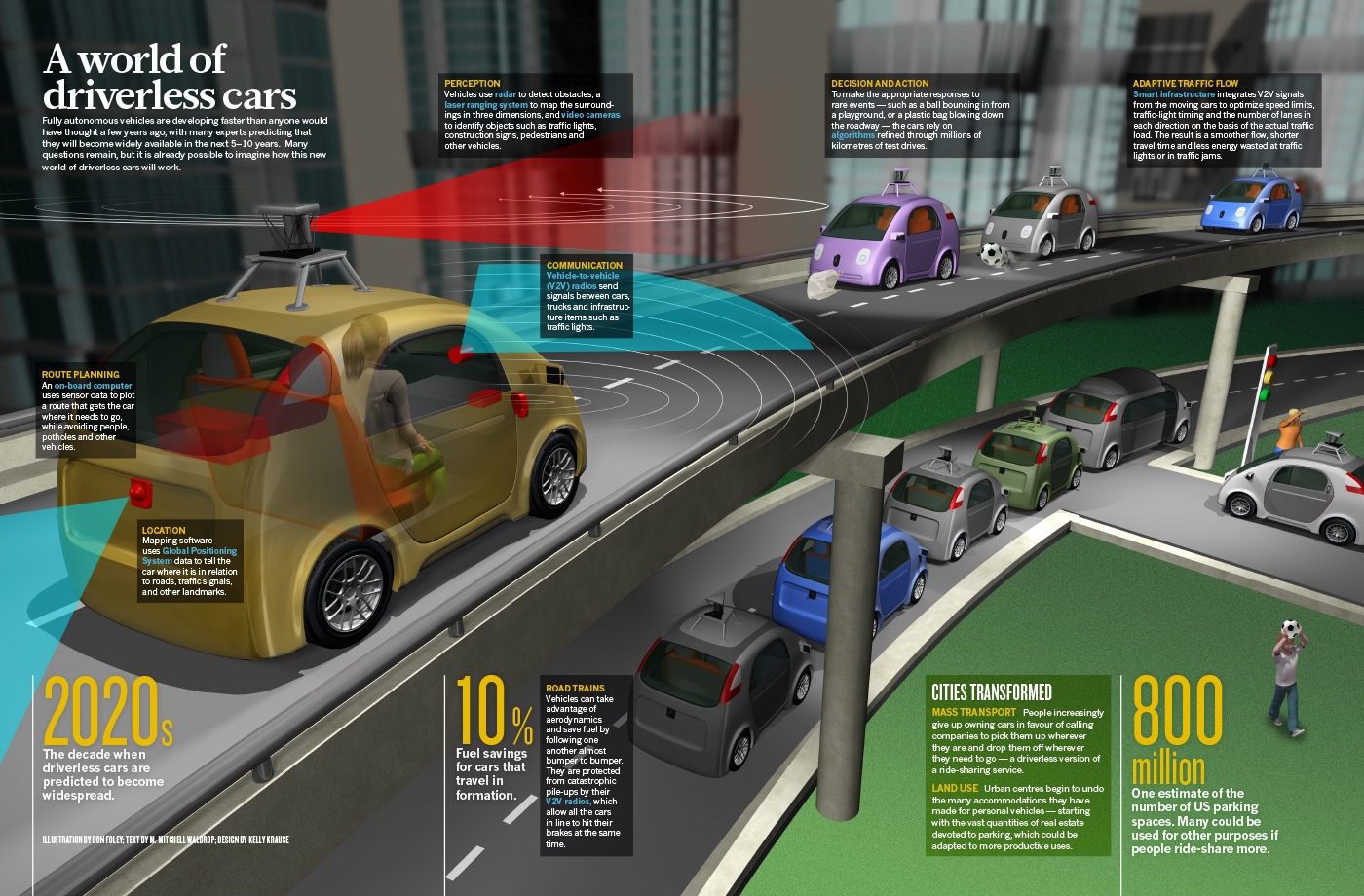

 Energy resource
Energy resource

 Energy resource
Energy resource
 *****Energy storage
*****Energy storage

 Energy resource
Energy resource
 *Electrical power
*Electrical power

 Energy resource
Energy resource
 *****Electronic electricity meters
*****Electronic electricity meters

 History
History
 N 2000 - 2100 AD
N 2000 - 2100 AD

 Science and technology
Science and technology
 Technology concepts
Technology concepts

智能电网(英语:Smart grid、smart electric grid、或intelligent grid),一种现代化的输电网络。利用信息及通信技术,以数字或类比[1]信号侦测与收集供应端的电力供应状况,与使用端的电力使用状况。再用这些信息来调整电力的生产与输配,或调整家电及企业用户的耗电量,以此达到节约能源、降低损耗、增强电网可靠性的目的。[2]。智能电网雏型是20世纪产生的,由一些中心发电机向大量用户传输电能的电网的简单升级。在传统电网的基础上,电能的传输拓扑网络更加优化以满足更大范围的各种用电状况,如在用电量低的时段给电池充电,然后在高峰时反过来给电网提供电能。
智能电网包含了一个智能电表基础建设(Advanced Metering Infrastructure,AMI),用于记录系统所有电能的流动。通过智能电表(Smart meter),它会随时监测电力使用的状况。[3]智能电网包括超导传输线以减少电能的传输损耗,还具有集成新能源,如风能、太阳能等的能力。当电能便宜时,消费者可以开启某些家用电器,如洗碗机,工厂可以启动在任何时间段都可以进行的生产过程。在电能需求的高峰期,它可以关闭一些非必要的用电设备来降低需求。其他的智能电网发展方向包括电网之故障侦测、判断、自动试送电等。智能电网之最基础建设在于电网上的设备由人工在地监测,进化到遥测、遥控,再进化到自动判断调整控制。
智能电网政策在欧洲被组织为智能电网欧洲技术平台。


 Automobile
Automobile
 ***Technology
***Technology

 History
History
 N 2000 - 2100 AD
N 2000 - 2100 AD


 IT-Times
IT-Times
 Technology concepts
Technology concepts


 IT-Times
IT-Times
 Big Data
Big Data


 IT-Times
IT-Times
 Cloud Computing
Cloud Computing


 IT-Times
IT-Times
 Artificial Intelligence
Artificial Intelligence

 Science and technology
Science and technology
 Technology concepts
Technology concepts




 Automobile
Automobile
 ***Technology
***Technology
 Elon Musk
Elon Musk

 History
History
 N 2000 - 2100 AD
N 2000 - 2100 AD


 IT-Times
IT-Times
 Mobile Networks
Mobile Networks


 IT-Times
IT-Times
 Driver assistance systems
Driver assistance systems


 IT-Times
IT-Times
 Smart phone
Smart phone




 Military, defense and equipment
Military, defense and equipment

 Ships and Nautics
Ships and Nautics
 SpaceX
SpaceX

 Transport and traffic
Transport and traffic

 Science and technology
Science and technology
 Technology concepts
Technology concepts

星链(英语:Starlink)是太空服务公司SpaceX计划推出的一项通过近地轨道卫星群,提供覆盖全球的高速互联网接入服务。
2015年,SpaceX首席执行官伊隆·马斯克在西雅图宣布推出一项太空高速互联网计划——星链计划[1]。凭借远远超过传统卫星互联网的性能,以及不受地面基础设施限制的全球网络,星链可以为网络服务不可靠,费用昂贵或完全没有网络的位置提供高速互联网服务,另外也有可能结束当今世界存在的网络封锁。[2]旨在为世界上的每一个人提供高速互联网服务。[3] 星链计划的宗旨是开发出“全球卫星互联网系统”[2],并能运用在例如火星等环境上,在太阳系内部署通信基础建设。
2018年2月22日,SpaceX在美国加州范登堡空军基地成功发射了一枚“猎鹰9号”火箭,并将两颗小型实验通信卫星送入轨道,星链计划由此开启[2]。2019年10月22日,SpaceX首席执行官伊隆·马斯克成功通过星链发送推特,并表示星链已能提供天基互联网服务。Starlink的目标是到2020年在美国北部和加拿大提供服务,到2021年将其服务范围扩大到接近全球。届时在地球上空的预定轨道部署由12000颗卫星组成的巨型卫星星座[4]。
Starlink ist ein von dem US-Raumfahrtunternehmen SpaceX betriebenes Satellitennetzwerk, das künftig weltweiten Internetzugang bieten soll.[1] Zum Kerngeschäft von Starlink zählen die Bereitstellung von Internetzugängen mit besonders geringer Paketumlaufzeit und die Bereitstellung in Gebieten, in denen zuvor keine oder eine nicht ausreichende Internetverbindung zur Verfügung stand.[2] Mit 1792 Starlink-Satelliten im Erdorbit (Stand Ende 2021[3]) ist SpaceX der mit Abstand größte Satellitenbetreiber weltweit.[4] Insgesamt bestehen bis zum Jahr 2027 befristete Genehmigungen für den Start von maximal 11.927 Satelliten[5] sowie Anträge von SpaceX für nochmals bis zu 30.000 Satelliten. Das entspricht zusammengenommen dem fünffachen aller von 1957 (Sputnik 1) bis 2019 gestarteten Satelliten.
スターリンク (Starlink) は、アメリカ合衆国の民間企業スペースXが運用している衛星コンステレーション[2]。低コスト・高性能な衛星バスと地上の送受信機により、衛星インターネットアクセスサービスを提供することを目的とする[3][4]。2020年、北アメリカ大陸とヨーロッパで試験運用が始まった[5]。サービス提供エリアでは、直径55センチメートル程度のアンテナで通信衛星と電波を直接やり取りして、地上の通信インフラが未整備の地域でもインターネットに接続できる[5]。
スペースXは、人工衛星を軍用や[6]、科学・探検などの用途に販売することも計画している[7]ほか、2020年代中頃までに総数約12,000基の人工衛星を3階層にわたって展開することを計画している。最初が高度550kmの約1,600基の衛星で、次が高度1,150kmのKu/Kaバンドを用いる約2,800基の衛星、さらに高度340kmのVバンドを用いる約7,500基の衛星である[8]。10年におよぶ計画の総コストは、設計・製造・打ち上げなど100億ドル近くに達すると推計される[9]。
Starlink is a satellite internet constellation operated by SpaceX,[3] providing satellite Internet access coverage to 48 countries. It also aims for global mobile phone service after 2023.[4] SpaceX started launching Starlink satellites in 2019. As of February 2023, Starlink consists of over 3,580 mass-produced small satellites in low Earth orbit (LEO),[5] which communicate with designated ground transceivers. In total, nearly 12,000 satellites are planned to be deployed, with a possible later extension to 42,000. SpaceX announced reaching more than one million subscribers in December 2022.[6]
The SpaceX satellite development facility in Redmond, Washington houses the Starlink research, development, manufacturing, and orbit control teams. The cost of the decade-long project to design, build, and deploy the constellation was estimated by SpaceX in May 2018 to be at least US$10 billion.[7] SpaceX expects more than $30 billion in revenue by 2025 from its satellite constellation, while revenues from its launch business were expected to reach $5 billion in the same year.[8][9]
Astronomers have raised concerns about the effect the constellation can have on ground-based astronomy and how the satellites will add to an already congested orbital environment.[10][11] SpaceX has attempted to mitigate astronomy concerns by implementing several upgrades to Starlink satellites aimed at reducing their brightness during operation.[12] The satellites are equipped with krypton-fueled Hall thrusters which allow them to de-orbit at the end of their life. Additionally, the satellites are designed to autonomously avoid collisions based on uplinked tracking data.[13]
Starlink est un fournisseur d'accès à Internet par satellite de la société SpaceX qui repose sur une constellation de satellites comportant des milliers de satellites de télécommunications placés sur une orbite terrestre basse. Starlink est le premier fournisseur d'internet par satellite à choisir cette orbite plutôt que l'orbite géostationnaire car elle permet de diminuer la latence en la faisant passer de 600 ms à environ 20 ms. La constellation est en cours de déploiement depuis 2019 et repose sur environ 2000 satellites opérationnels en juin 2022. À cette date Starlink compte environ un demi million de clients dans une dizaine de pays, dont la France, qui ont autorisé la société à utiliser les fréquences nécessaires au système.
Pour atteindre ses objectifs commerciaux, SpaceX prévoit de disposer vers 2025 de 12 000 satellites, chiffre qui doit être porté à terme à 42 000. Sur le plan technique chaque satellite dispose d'une capacité de 20 gigabits/seconde et utilise la bande Ku pour les liaisons avec les terminaux des utilisateurs et la bande Ka pour les liaisons avec les stations terriennes. Le satellite, qui circule sur une orbite circulaire à une altitude d'environ 550 kilomètres, a une masse approximative de moins de 300 kilogrammes et dispose d'un moteur ionique pour atteindre et maintenir sa position sur son orbite et réduire celle-ci en fin de vie (environ 6 ans) afin d'être détruit par sa rentrée atmosphérique. Le terminal utilisateur repose sur une antenne réseau à commande de phase comportant un dispositif mécanique pour l'orientation en hauteur.
La viabilité économique de Starlink dépend notamment du coût de fabrication et de mise en orbite des satellites. SpaceX utilise ses lanceurs Falcon 9 pour déployer sa constellation à des couts fortement réduits grâce à la ré-utilisabilité de ce lanceur et à la compacité des satellites qui permet de placer en orbite 50 à 60 de ces engins à chaque lancement. Plusieurs sociétés concurrentes ont prévu de mettre en service des constellations analogues. OneWeb est la plus avancée.
Le déploiement d'une constellation de satellites aussi importante en nombre sur l'orbite basse suscite plusieurs problèmes compte tenu du fait que le nombre de satellites en orbite basse va être décuplé par la seule présence des satellites Starlink (en configuration cible à 40 000 satellites). Le risque de collision entre satellites va augmenter dans des proportions importantes qui rendent inadaptées les dispositifs anti-collision existants. Les observations astronomiques par les grands observatoires terrestres sont gênées, en particulier les programmes de recensement et de suivi des objets célestes.
Starlink è una costellazione di satelliti attualmente in costruzione dal produttore privato aerospaziale americano SpaceX[1][2] per l'accesso a internet satellitare globale in banda larga a bassa latenza.[3][4] La costellazione sarà costituita da migliaia di satelliti miniaturizzati prodotti in massa, collocati in orbita terrestre bassa (LEO), che lavoreranno in sintonia con ricetrasmettitori terrestri. SpaceX è intenzionata, inoltre, alla commercializzazione di alcuni dei suoi satelliti per scopi militari,[5] scientifici ed esplorativi.[6]
Sono state sollevate preoccupazioni riguardo agli effetti e ai danni a lungo termine dei detriti spaziali, conseguenti dal rilascio di migliaia di satelliti in orbite al di sopra dei 1000 km[7]. Successivamente è stato deciso di utilizzare orbite intorno ai 550 km, relativamente più sicure perché consentono ai detriti di decadere in tempi minori.[8] Altre critiche sono relative a un possibile impatto negativo nelle attività di astronomia osservativa[9], che SpaceX ha annunciato di voler risolvere. A giugno 2020, uno dei satelliti della costellazione ha un rivestimento sperimentale studiato appositamente per renderlo meno riflettente e quindi meno visibile a osservazioni astronomiche da terra.[10]
Il costo totale dalla progettazione alla realizzazione fino a regime, in un periodo di 10 anni, è stato stimato da SpaceX nel maggio del 2018 pari a 10 miliardi di dollari statunitensi.[11]
Il percorso di sviluppo del prodotto è iniziato nel 2015, con i primi due voli di prova dei prototipi di satelliti lanciati nel febbraio 2018. Il primo lancio per il dispiegamento di una parte della costellazione, è avvenuto il 24 maggio 2019 con i primi 60 satelliti portati con successo in orbita.[1] La sede di sviluppo dei satelliti di SpaceX è a Redmond (Washington), dove risiedono strutture di ricerca, progettazione, costruzione e controllo operativo.
A maggio 2021 sono 1433 i satelliti operativi della costellazione in orbita.[12][13][14] SpaceX ha attivato un servizio privato in beta negli Stati Uniti ad agosto 2020 e ha lanciato un servizio pubblico, sempre in beta, ad ottobre 2020, attivo solo ad alte latitudini. SpaceX attualmente è in grado di portare in orbita 60 satelliti per ogni lancio e si pone come obiettivo il dispiegamento di ulteriori 1500 satelliti (dal peso di 250 kg) entro la fine del 2021 e l'inizio del 2022. Al momento (2020), tuttavia, queste sono solo previsioni interne e non date ufficiali.
Da febbraio 2021 il servizio è attivo su pre-ordinazione anche in Italia.
Starlink es una empresa que nació como proyecto de SpaceX para la creación de una constelación de satélites de internet2 con el objetivo de brindar un servicio de internet de banda ancha, baja latencia y cobertura mundial a bajo costo.34 SpaceX comenzó a lanzar satélites Starlink en 2019. En septiembre de 2022, Starlink había colocado más de 3,000 satélites fabricados en serie en órbita terrestre baja (LEO).5 En 2017 se completaron los requisitos regulatorios para lanzar cerca de 12.000 satélites para mediados de la década de 2020.6 SpaceX también planea vender satélites para uso militar,7 científico y de exploración.8 En noviembre de 2018, la empresa recibió la autorización del ente gubernamental estadounidense (FCC) para desplegar 7.518 satélites de banda ancha, que se sumarían a los 4.425 aprobados en marzo del mismo año.9
El desarrollo comenzó en 2015, y los primeros prototipos de satélite fueron lanzados el 22 de febrero de 2018.1011 El lanzamiento de los primeros 60 satélites se llevó a cabo el 23 de mayo de 2019, y se espera que el inicio de operaciones comerciales de la constelación empiece en el año 2020.1213 La investigación y desarrollo del proyecto tiene lugar en las instalaciones de SpaceX ubicadas en Redmond, Washington.
Starlink[1] — глобальная спутниковая система, разворачиваемая компанией SpaceX для обеспечения высокоскоростным широкополосным спутниковым доступом в Интернет в местах, где он был ненадёжным, дорогим или полностью недоступным[2][3]. Подразделение SpaceX, занимающееся исследованиями, разработкой и производством спутниковых систем, расположено в Редмонде (штат Вашингтон).
Разработка проекта началась в 2015 году, тестовые прототипы TINTIN[en] были успешно запущены 22 февраля 2018 года[4].
К 2017 году SpaceX представила нормативные документы для запуска в общей сложности почти 12 тыс ИСЗ на околоземную орбиту к середине 2020-х годов[5][6]. В мае 2019 года была запущена первая группа из 60 спутников-прототипов.
В 2020 году SpaceX начала предоставлять коммерческие услуги доступа в Интернет в северной части США и Канаде. По состоянию на январь 2022 года число пользователей бета-тестеров Starlink достигло 145 тыс в 25 странах мира[7]. По состоянию на май 2022 года число пользователей выросло до 400 тысяч[8].
Общая сумма инвестиций для реализации проекта оценивается в 10 млрд $[9]. SpaceX также планирует продавать спутники, использующие эту же систему, для исследовательских и научных целей[10].
С 2022 года Starlink применяется Вооружёнными Силами Украины для связи между подразделениями и наведения оружия, дронов и артиллерии с целью уничтожения российских военных позиций, танков и техники в ходе вторжения России на Украину.

 History
History

 History
History
 N 2000 - 2100 AD
N 2000 - 2100 AD



 Aerospace
Aerospace
 Reusable launch system
Reusable launch system



 Aerospace
Aerospace
 SpaceX
SpaceX

 Science and technology
Science and technology

 Science and technology
Science and technology
 Technology concepts
Technology concepts



Supraleiter sind Materialien, deren elektrischer Widerstand beim Unterschreiten der sogenannten Sprungtemperatur praktisch Null wird. Die Supraleitung wurde 1911 von Heike Kamerlingh Onnes, einem Pionier der Tieftemperaturphysik, entdeckt. Sie ist ein makroskopischer Quantenzustand.[1]
Viele Metalle, aber auch andere Materialien sind Supraleiter. Die Sprungtemperatur – auch „kritische Temperatur“ Tc genannt – ist für die meisten Supraleiter sehr niedrig; um Supraleitung zu erreichen, muss das Material im Allgemeinen mit verflüssigtem Helium (Siedetemperatur −269 °C) gekühlt werden. Nur bei den Hochtemperatursupraleitern genügt zur Kühlung verflüssigter Stickstoff (Siedetemperatur −196 °C).
Im supraleitenden Zustand tritt der Meißner-Ochsenfeld-Effekt auf, d. h. das Innere des Materials bleibt bzw. wird frei von elektrischen und magnetischen Feldern. Ein elektrisches Feld würde durch die ohne Widerstand beweglichen Ladungsträger sofort abgebaut. Magnetfelder werden durch den Aufbau entsprechender Abschirmströme an der Oberfläche verdrängt, die mit ihrem eigenen Magnetfeld das von außen eindringende Magnetfeld kompensieren. Ein nicht zu starkes Magnetfeld dringt nur etwa 100 nm weit in das Material ein; diese dünne Schicht trägt die Abschirm- und Leitungsströme.
Der Stromfluss durch den Supraleiter senkt die Sprungtemperatur. Die Sprungtemperatur sinkt auch, wenn ein äußeres Magnetfeld anliegt. Überschreitet das Magnetfeld einen kritischen Wert, so beobachtet man je nach Material verschiedene Effekte. Bricht die Supraleitung schlagartig zusammen, spricht man von einem Supraleiter erster Art oder vom Typ I. Supraleiter zweiter Art dagegen (Typ II) haben zwei kritische Feldstärken, ab der niedrigeren beginnt das Feld einzudringen, bei der höheren bricht die Supraleitung zusammen. In dem Bereich dazwischen dringt das Magnetfeld in Form mikroskopisch feiner Schläuche zunehmend in den Leiter ein. Der magnetische Fluss in diesen Flussschläuchen ist quantisiert. Supraleiter vom Typ II sind durch ihre hohe Stromtragfähigkeit interessant für technische Anwendungen.
Technische Anwendungen der Supraleitung sind die Erzeugung starker Magnetfelder – für Teilchenbeschleuniger, Kernfusionsreaktoren, Magnetresonanztomographie, Levitation – sowie Mess- und Energietechnik.
超导现象(英語:Superconductivity)是指材料在低于某一温度时,电阻变为零的现象,而这一温度称为超导转变温度(Tc)。超导现象的特征是零电阻和完全抗磁性。

 Energy resource
Energy resource

 Energy resource
Energy resource
 *Nuclear fusion
*Nuclear fusion
 France
France

 History
History
 N 2000 - 2100 AD
N 2000 - 2100 AD

 Provence-Alpes-Côte d´Azur
Provence-Alpes-Côte d´Azur

 Science and technology
Science and technology
 Technology concepts
Technology concepts

托卡马克[1][2](俄语:Токамак,罗马化:Tokamak)又译托克马克,或称环磁机,是一种利用磁约束来实现磁约束聚变的环性容器。达到稳定的等离子体均衡需要围绕环面移动的螺旋形状的磁力线。
托卡马克是磁约束装置的几种类型之一,并且是用于生产受控热核核聚变能中的一个最深入研究的候选类型。磁场被用于约束是因为等离子体冷却会使反应停止。而超导托卡马克可长时间约束等离子体。世界上第一个超导托卡马克为俄制的T-7(托卡马克7号)。另一种托卡马克的一种替代方案是仿星器。
托卡马克最初是由位于苏联莫斯科的库尔恰托夫研究所的物理学家伊戈尔·塔姆,安德烈·萨哈罗夫,和列夫·阿齐莫维齐等人在1950年代发明的。
 California-CA
California-CA
 Astronomy
Astronomy
